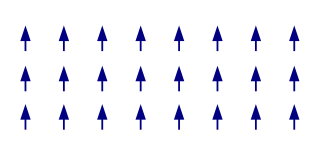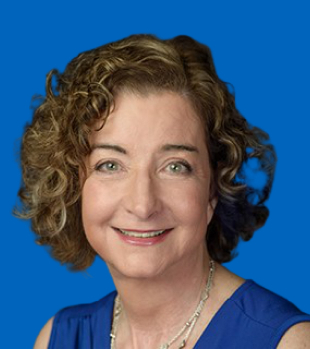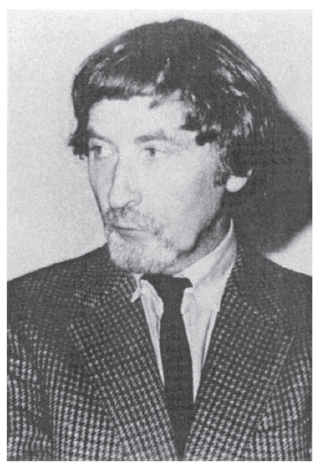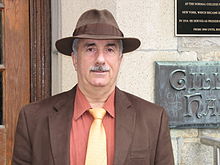
Condensed matter physics is the field of physics that deals with the macroscopic and microscopic physical properties of matter, especially the solid and liquid phases which arise from electromagnetic forces between atoms. More generally, the subject deals with condensed phases of matter: systems of many constituents with strong interactions among them. More exotic condensed phases include the superconducting phase exhibited by certain materials at extremely low cryogenic temperature, the ferromagnetic and antiferromagnetic phases of spins on crystal lattices of atoms, and the Bose–Einstein condensate found in ultracold atomic systems. Condensed matter physicists seek to understand the behavior of these phases by experiments to measure various material properties, and by applying the physical laws of quantum mechanics, electromagnetism, statistical mechanics, and other physics theories to develop mathematical models.

Ferromagnetism is a property of certain materials that results in a significant, observable magnetic permeability, and in many cases, a significant magnetic coercivity, allowing the material to form a permanent magnet. Ferromagnetic materials are familiar metals that are noticeably attracted to a magnet, a consequence of their substantial magnetic permeability. Magnetic permeability describes the induced magnetization of a material due to the presence of an external magnetic field. This temporarily induced magnetization, for example, inside a steel plate, accounts for its attraction to the permanent magnet. Whether or not that steel plate acquires a permanent magnetization itself depends not only on the strength of the applied field but on the so-called coercivity of the ferromagnetic material, which can vary greatly.

Magnetism is the class of physical attributes that occur through a magnetic field, which allows objects to attract or repel each other. Because both electric currents and magnetic moments of elementary particles give rise to a magnetic field, magnetism is one of two aspects of electromagnetism.

A magnetic field is a vector field that describes the magnetic influence on moving electric charges, electric currents, and magnetic materials. A moving charge in a magnetic field experiences a force perpendicular to its own velocity and to the magnetic field. A permanent magnet's magnetic field pulls on ferromagnetic materials such as iron, and attracts or repels other magnets. In addition, a nonuniform magnetic field exerts minuscule forces on "nonmagnetic" materials by three other magnetic effects: paramagnetism, diamagnetism, and antiferromagnetism, although these forces are usually so small they can only be detected by laboratory equipment. Magnetic fields surround magnetized materials, electric currents, and electric fields varying in time. Since both strength and direction of a magnetic field may vary with location, it is described mathematically by a function assigning a vector to each point of space, called a vector field.

In materials that exhibit antiferromagnetism, the magnetic moments of atoms or molecules, usually related to the spins of electrons, align in a regular pattern with neighboring spins pointing in opposite directions. This is, like ferromagnetism and ferrimagnetism, a manifestation of ordered magnetism. The phenomenon of antiferromagnetism was first introduced by Lev Landau in 1933.

A magnon is a quasiparticle, a collective excitation of the spin structure of an electron in a crystal lattice. In the equivalent wave picture of quantum mechanics, a magnon can be viewed as a quantized spin wave. Magnons carry a fixed amount of energy and lattice momentum, and are spin-1, indicating they obey boson behavior.
Exchange bias or exchange anisotropy occurs in bilayers of magnetic materials where the hard magnetization behavior of an antiferromagnetic thin film causes a shift in the soft magnetization curve of a ferromagnetic film. The exchange bias phenomenon is of tremendous utility in magnetic recording, where it is used to pin the state of the readback heads of hard disk drives at exactly their point of maximum sensitivity; hence the term "bias."

The term magnetic structure of a material pertains to the ordered arrangement of magnetic spins, typically within an ordered crystallographic lattice. Its study is a branch of solid-state physics.
In magnetism, a nanomagnet is a nanoscopic scale system that presents spontaneous magnetic order (magnetization) at zero applied magnetic field (remanence).
Anupam Garg is a professor in the department of Physics & Astronomy at Northwestern University, Illinois. He received his Ph.D. in 1983 from Cornell University. In 2012, he became a Fellow of the American Physical Society (APS) thanks to his work on molecular magnetism and macroscopic quantum phenomena.

In condensed matter physics, an Arrott plot is a plot of the square of the magnetization of a substance, against the ratio of the applied magnetic field to magnetization at one fixed temperature(s). Arrott plots are an easy way of determining the presence of ferromagnetic order in a material. They are named after American physicist Anthony Arrott who introduced them as a technique for studying magnetism in 1957.

Laura H. Greene is the Marie Krafft Professor of Physics at Florida State University and chief scientist at the National High Magnetic Field Laboratory. She was previously a professor of physics at the University of Illinois at Urbana-Champaign. In September 2021, she was appointed to the President's Council of Advisors on Science and Technology (PCAST).
Quantum spin tunneling, or quantum tunneling of magnetization, is a physical phenomenon by which the quantum mechanical state that describes the collective magnetization of a nanomagnet is a linear superposition of two states with well defined and opposite magnetization. Classically, the magnetic anisotropy favors neither of the two states with opposite magnetization, so that the system has two equivalent ground states.

Antonio Barone was an Italian physicist. He was Emeritus Professor of the Federico II University of Naples and Director of the CNR Cybernetics Institute in Arco Felice (Naples), Italy. He is best known for his work on superconductivity and Josephson effect.
Periodic instantons are finite energy solutions of Euclidean-time field equations which communicate between two turning points in the barrier of a potential and are therefore also known as bounces. Vacuum instantons, normally simply called instantons, are the corresponding zero energy configurations in the limit of infinite Euclidean time. For completeness we add that ``sphalerons´´ are the field configurations at the very top of a potential barrier. Vacuum instantons carry a winding number, the other configurations do not. Periodic instantons werde discovered with the explicit solution of Euclidean-time field equations for double-well potentials and the cosine potential with non-vanishing energy and are explicitly expressible in terms of Jacobian elliptic functions. Periodic instantons describe the oscillations between two endpoints of a potential barrier between two potential wells. The frequency of these oscillations or the tunneling between the two wells is related to the bifurcation or level splitting of the energies of states or wave functions related to the wells on either side of the barrier, i.e. . One can also interpret this energy change as the energy contribution to the well energy on either side originating from the integral describing the overlap of the wave functions on either side in the domain of the barrier.
Dmitry Garanin is a Russian-American physicist known for his work in theoretical condensed matter physics. He is a professor in the Department of Physics & Astronomy at Lehman College of The City University of New York and a faculty member in the physics department of the CUNY Graduate Center.

Gang Cao is an American condensed matter physicist, academic, author, and researcher. He is a professor of physics at the University of Colorado Boulder. and Director of Center for Experiments on Quantum Materials.
Dietrich Belitz is an American theoretical physicist on the faculty of the University of Oregon. He studies statistical mechanics and condensed matter physics.

Karl Heinz Bennemann is a German condensed matter physicist. He has contributed to the advance on the understanding of traditional BCS and high Tc superconductors, the magnetic properties of alloys, the magnetic properties of low dimensional systems, the physicochemical properties of surfaces, the physicochemical properties of nanostructured materials, ultrafast phenomena, and non-linear optics, among others. His work was recognized through an Alfred P. Sloan fellowship in 1969.
Jacek K. Furdyna is a Polish American physicist and academic. He is a Professor Emeritus at the University of Notre Dame.











